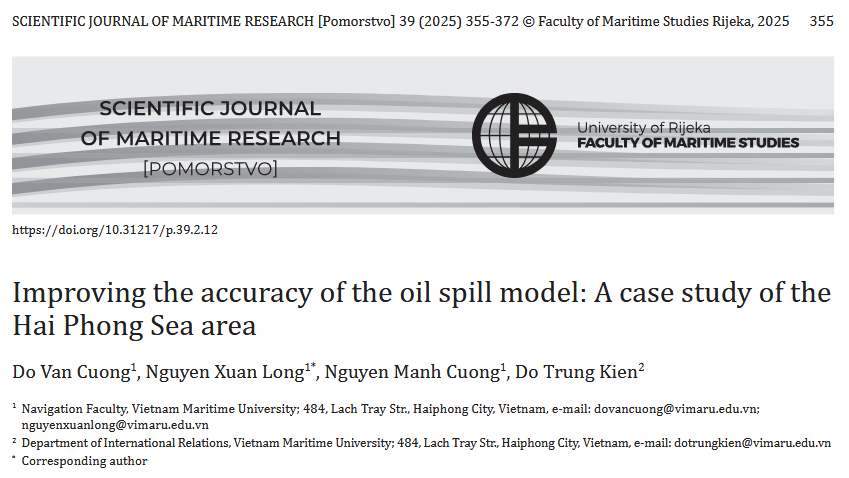Improving the accuracy of the oil spill model: A case study of the Hai Phong Sea area
Keywords:
Oil spill modeling, Hydrodynamic calibration, Coastal pollution simulationAbstract
Oil spill modeling is a crucial tool in marine environmental management, enabling early prediction and mitigation of pollution impacts on coastal ecosystems. This study presents a high-resolution oil spill simulation framework developed for the Hai Phong coastal region in northern Vietnam, where risks from maritime activities are significant. The proposed approach utilizes a Lagrangian particle tracking method to simulate the transport and dispersion of oil particles driven by wind, wave, and tidal forces. A hydrodynamic model underpins the simulation, with its input parameters systematically calibrated to improve accuracy. Model calibration was guided by widely accepted error assessment metrics, including Root Mean Square Error, Nash–Sutcliffe Efficiency, and Percent Bias. These indicators were used to iteratively refine the simulation until a satisfactory match with empirical observations was achieved. Unlike traditional models that often rely on static inputs,
this study incorporates dynamic environmental forcing and applies adaptive calibration strategies, allowing for reliable forecasts even when the spill source is uncertain or data availability is limited. The model demonstrates strong predictive capacity during the critical early hours following an oil spill, highlighting its potential for integration into rapid-response systems. Overall, the framework contributes to advancing oil spill preparedness and response strategies in data-scarce coastal regions, supporting both ecological protection and maritime risk management.

Downloads
Published
Issue
Section
Categories
License
Copyright (c) 2025 Van Cuong Do, Xuan Long Nguyen, Manh Cuong Nguyen, Trung Kien Do

This work is licensed under a Creative Commons Attribution-NonCommercial-NoDerivatives 4.0 International License.
Scientific Journal of Maritime Research understands the need for authors to disseminate and maximize the impact of their research. When submitting an article for publishing in Scientific Journal of Maritime Research, it implies that the Corresponding Author transfers, with the consent of all Coauthors, the copyright ownership in the referenced submission, including all versions in any format now known or hereafter developed, to the Scientific Journal of Maritime Research.
Copyright protects your original work and research material and prevents others from using it without your permission. Others will be required to credit you and your work properly, thus increasing its impact. Should your submission be rejected or withdrawn prior to acceptance for publication by Scientific Journal of Maritime Research, this transfer will be null and void.
Authors, users or readers of an article need clear instructions on how they can use the article. Scientific Journal of Maritime Research uses the Creative Commons Attribution-NonCommercial-NoDerivatives (CC-BY-NC-ND) 4.0 International License, which governs the use, publishing and distribution of articles by authors, publishers and the wider general public.
The authors are allowed to post a digital file of the published article, or the link to the published article (Scientific Journal of Maritime Research web page) may be made publicly available on websites or repositories, such as the Author’s personal website, preprint servers, university networks or primary employer’s institutional websites, third party institutional or subject-based repositories, and conference websites that feature presentations by the Author(s) based on the published article, under the condition that the article is posted in its unaltered Scientific Journal of Maritime Research form, exclusively for non-commercial purposes.




